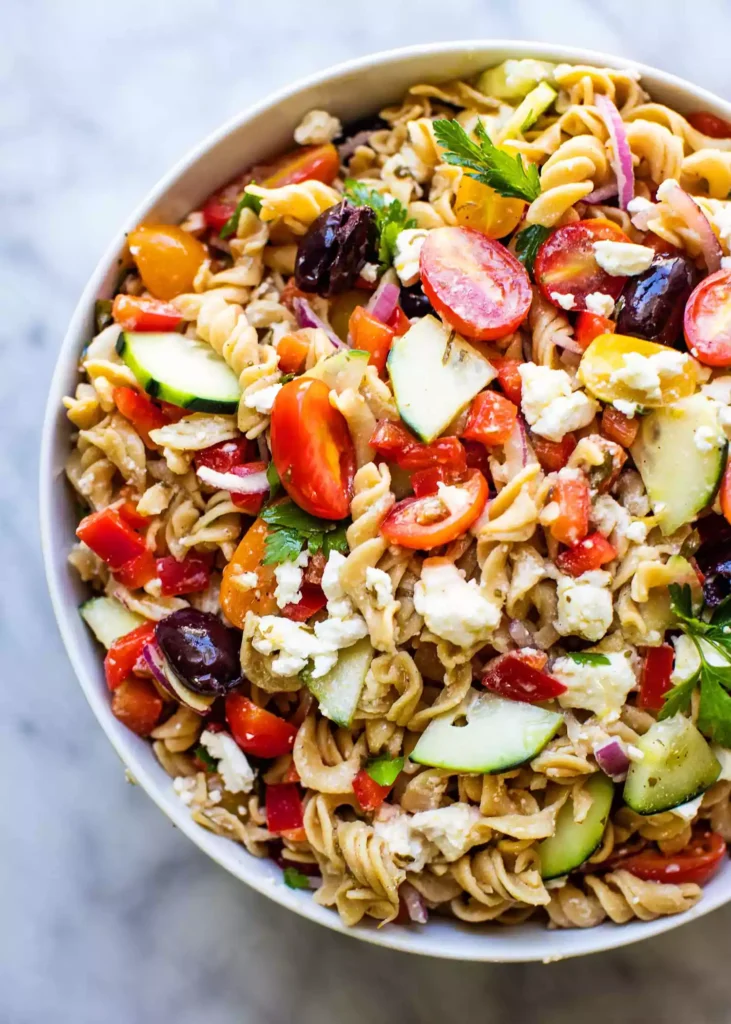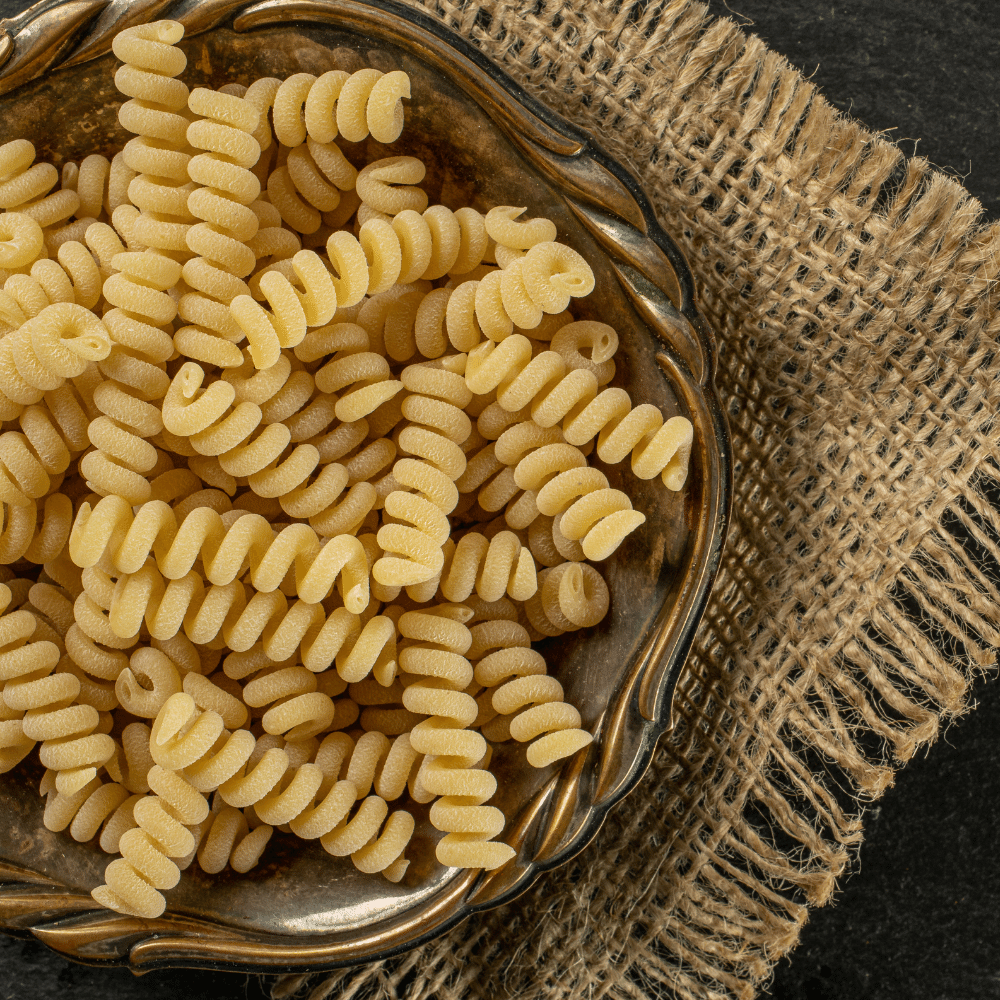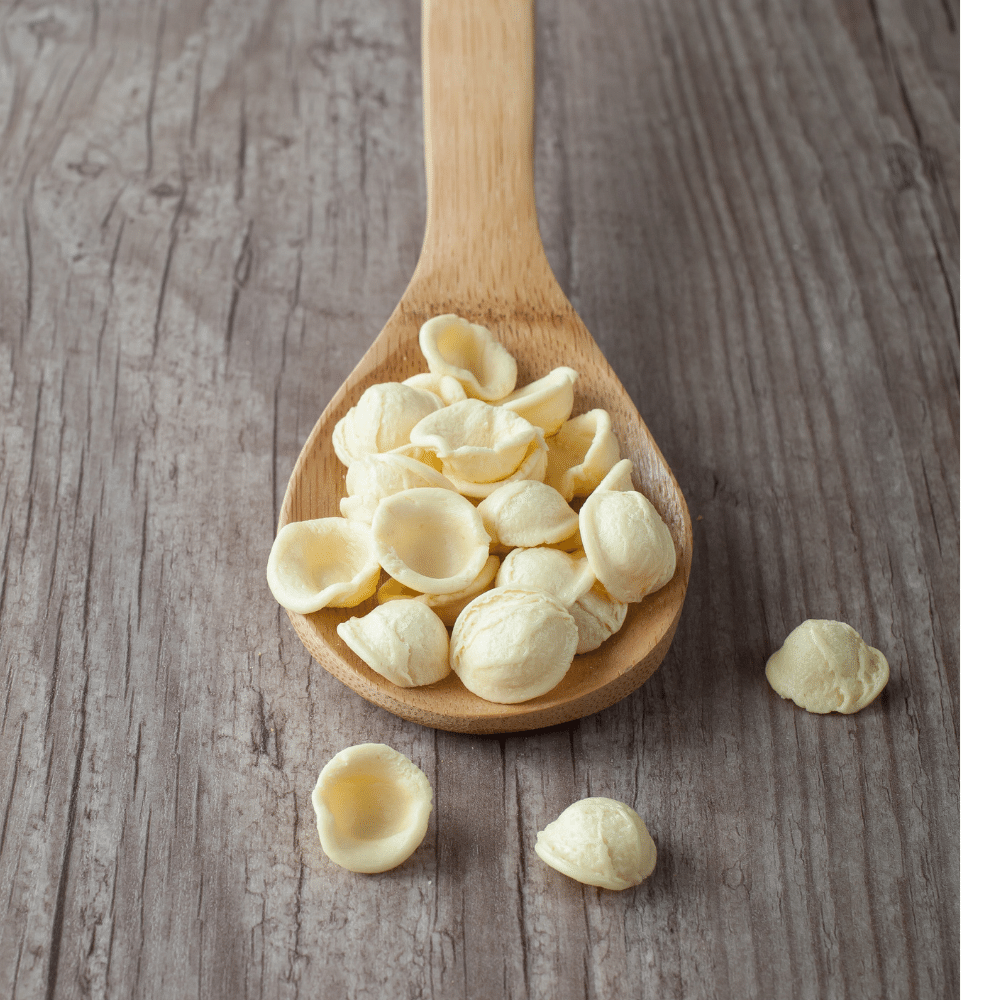If you’re looking for a delicious and nutritious meal, look no further than Greek pasta salad.
This dish is packed with flavor from the fresh vegetables, herbs, and feta cheese that are combined with the perfect kind of pasta.
But what type of pasta should you use?
With so many options out there, it can be hard to decide.
In this article, I will discuss five different kinds of pasta that work best for Greek pasta salads.
From classic shells to creative twists like orzo and farfalle, I will provide all the information you need to make your next Greek-inspired meal a success!
Read Also:
- Greek Salad Wine Pairing – Best Wines for Greek Salads
- What Vegetables Go in Pasta Salad? (15 Best Veggies)
What is Greek Pasta Salad?

Greek pasta salad is a popular Mediterranean dish that combines cooked pasta with vegetables, feta cheese, olives, and a flavorful dressing.
It’s typically served cold or at room temperature as an appetizer or side dish.
The ingredients used in Greek pasta salad vary depending on the region it comes from; some versions include tomatoes, cucumbers, bell peppers, onions, capers and artichoke hearts.
The dressing usually consists of olive oil combined with lemon juice and herbs such as oregano and thyme.
This type of salad is often topped with crumbled feta cheese for added flavor and texture.
Greek pasta salad can be served alongside grilled meats or fish for a complete meal.
The 5 Best Kinds of Pasta for Greek Pasta Salad
Greek pasta salad is a delicious and nutritious dish that can be made with any type of pasta.
However, some types are better suited to the flavors of Greek ingredients than others.
Here are five kinds of pasta that work best in Greek pasta salads:
1. Fusilli

Fusilli is a type of pasta that is shaped like a corkscrew or spiral.
It can be made with either white flour or whole wheat flour, and it comes in various sizes.
The most common size is the fusilli bucati corti, which are short spirals about 2 inches long.
- Varieties: There are several varieties of fusilli available on the market today. Some of these include fusilli lunghi, which are longer spirals; fusilli tricolore, which have three colors swirled together; and farfalle, which are bow-tie shaped noodles.
- Common Uses: Fusilli is often used in salads because its shape helps to hold onto dressings and sauces better than other types of pasta. It’s also great for baking dishes such as macaroni and cheese or casseroles because it holds its shape well when cooked. Additionally, it’s perfect for cold dishes such as Greek pasta salad because the sauce clings to the spirals nicely.
2. Penne

Penne is a type of pasta that is shaped like a cylinder with ridges on the outside.
It comes in two varieties, penne lisce (smooth) and penne rigate (ridged).
The ridged variety has grooves that help it hold sauces better than the smooth variety.
Penne is made from durum wheat flour and water, and can be found in both white and whole wheat varieties.
- Varieties: Penne comes in many different shapes, sizes, and colors. There are traditional penne as well as mini penne, which are smaller versions of the classic shape; there are also ziti noodles which have a similar shape but are slightly larger than regular penne. Additionally, you can find colored versions such as spinach or tomato-flavored pastas that add an extra layer of flavor to your dish.
- Common Uses: Penne pasta is incredibly versatile and can be used in a wide range of dishes including salads, soups, casseroles, baked dishes, stir-fries, and more. It’s especially popular for making Greek pasta salad due to its ability to hold onto dressings well; it also works great for macaroni salads since it holds up nicely when mixed with other ingredients like vegetables or meats.
3. Orecchiette

Orecchiette is a type of pasta that originated in the southern Italian region of Apulia.
It is shaped like small discs or “little ears” and has a unique texture that makes it perfect for holding sauce.
The pasta can be made with semolina flour, durum wheat flour, or whole wheat flour, depending on the recipe.
- Varieties: Orecchiette comes in many varieties such as plain orecchiette, spinach orecchiette, and even gluten-free versions. You can also find flavored orecchiette such as garlic and herb orecchiette or tomato basil orecchiette.
- Common Uses: Orecchiette is most commonly used in soups and salads but can also be used in casseroles and other dishes. It pairs well with creamy sauces such as Alfredo sauce or pesto sauce, as well as light sauces like olive oil-based sauces or tomato-based sauces. In Greek pasta salad recipes, you’ll often find olives, feta cheese, tomatoes, cucumbers and oregano tossed together with cooked orecchiette for a delicious Mediterranean meal!
4. Farfalle

Farfalle, also known as bow-tie pasta, is a type of Italian pasta that is shaped like a butterfly or bow tie.
It comes in many sizes and colors, including white, whole wheat, spinach, tomato, and even squid ink.
The name “farfalle” comes from the Italian word for “butterfly” due to its shape.
- Varieties: Farfalle come in different sizes ranging from small (known as farfalline) to large (known as farfalloni). They can be used in any recipe calling for short cut pasta such as macaroni and penne.
- Common Uses: Farfalle are most commonly used in salads but can also be served with sauces or soups. They are especially popular in Greek pasta salad recipes because their shape helps them hold onto the dressing better than other types of noodles. Additionally, they are often used to make casseroles since they hold up well when baked.
5. Rotini

Rotini is a type of pasta that is shaped like a corkscrew or spiral.
It has ridges on the outside and a hollow center, making it perfect for holding sauces and other ingredients.
The name comes from the Italian word rotire, which means “to turn”—a reference to its shape.
- Varieties: There are many varieties of rotini available in stores today, including whole wheat, gluten-free, and multigrain versions. You can also find flavored varieties such as spinach or tomato-flavored rotini.
- Common Uses: Rotini is often used in cold salads because its shape helps it hold onto dressings and other ingredients better than other types of pasta. It’s also great for hot dishes like macaroni and cheese or baked casseroles since it holds up well when cooked. Additionally, you can use it in soups or stir-fries to add texture and flavor to your dish.
Conclusion
In conclusion, Greek pasta salad is a light and delicious dish that can be enjoyed for lunch or dinner.
To make the perfect Greek pasta salad, you need to choose the right kind of pasta.
The best kinds of pasta for Greek pasta salad are fusilli, penne, orecchiette, farfalle, and rotini. These types of pasta are ideal for Greek pasta salad because they hold up well to the dressing and the other ingredients in the salad.
So, grab your favorite ingredients, some of these pasta shapes, and get ready to enjoy a delicious and healthy Greek pasta salad.

The 5 Best Kinds of Pasta for Greek Pasta Salad
Ingredients
- Fusilli
- Penne
- Orecchiette
- Farfalle
- Rotini
Instructions
- Pick your favorite type of pasta from this list to use in your Greek pasta salad recipe.
- Prepare the rest of your meal, and enjoy!
Jenny has always been passionate about cooking, and she uses her platform to share her joy of food with others. Her recipes are easy to follow, and she loves giving tips and tricks to help others create their own unique culinary creations.

